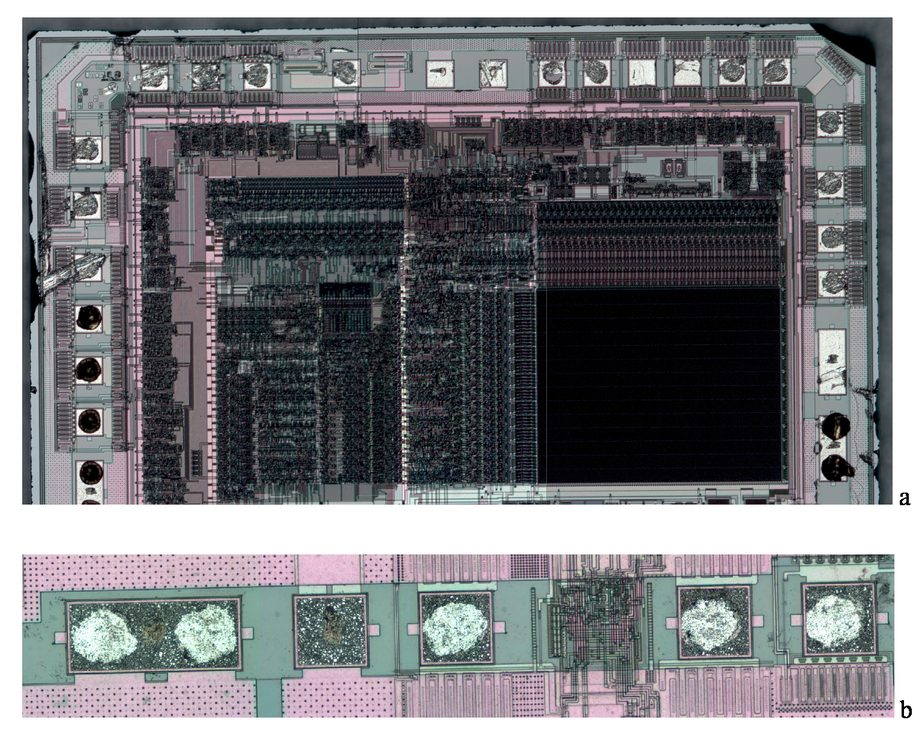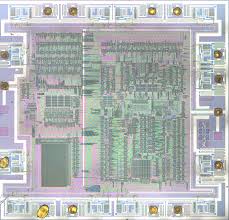Posts Tagged ‘reverse microchip mcu firmware’
 Reverse Microchip MCU PIC16LF77 Flash
Reverse Microchip MCU PIC16LF77 Flash
Reverse Microchip MCU PIC16LF77 Flash memory and readout hex of microcontroller PIC16LF77, status of processor PIC16LF77 can be opened and unlocking MCU’s tamper resistance system;

Low power, high speed CMOS FLASH technology
Fully static design
Wide operating voltage range: 2.0V to 5.5V
High Sink/Source Current: 25 mA
Industrial temperature range
Low power consumption:
– < 2 mA typical @ 5V, 4 MHz
– 20 µA typical @ 3V, 32 kHz
– < 1 µA typical standby current
PIC16F73/76 devices are available only in 28-pin packages, while PIC16F77 devices are available in 40-pin and 44-pin packages.
All devices in the PIC16F7X family share common architecture, with the following differences:
The PIC16F73 and PIC16F76 have one-half of the total on-chip memory of the PIC16LF77
The 28-pin devices have 3 I/O ports, while the 40/44-pin devices have 5
The 28-pin devices have 11 interrupts, while the 40/44-pin devices have 12
The 28-pin devices have 5 A/D input channels, while the 40/44-pin devices have 8
The Parallel Slave Port is implemented only on the 40/44-pin devices before Microchip mcu chip recovering
Additional information may be found in the PICmicro™ Mid-Range Reference Manual (DS33023), which may be obtained from your local Microchip Sales Representative or downloaded from the Microchip website.
The Reference Manual should be considered a complementary document to this data sheet, and is highly recommended reading for a better understanding of the device architecture and operation of the peripheral modules of Microchip mcu ST62T15C6 firmware attacking.
 Reverse Microchip MCU PIC16F77 Flash
Reverse Microchip MCU PIC16F77 Flash
Reverse Microchip MCU PIC16F77 Flash memory and locate the fuse bit of microcontroller, and extract code from MCU PIC16F777;

- High performance RISC CPU
- Only 35 single word instructions to learn
- All single cycle instructions except for program branches which are two-cycle
- Operating speed: DC – 20 MHz clock input DC – 200 ns instruction cycle
- Up to 8K x 14 words of FLASH Program Memory, Up to 368 x 8 bytes of Data Memory (RAM)
- Pinout compatible to the PIC16C73B/74B/76/77
- Pinout compatible to the PIC16F873/874/876/877
- Interrupt capability (up to 12 sources)
- Eight level deep hardware stack
- Direct, Indirect and Relative Addressing modes
- Brown-out detection circuitry for
- Parallel Slave Port (PSP), 8-bits wide with
- Universal Synchronous Asynchronous Receiver
- 8-bit, up to 8-channel Analog-to-Digital converter
- Synchronous Serial Port (SSP) with SPI (Master
- Timer2: 8-bit timer/counter with 8-bit period
- Timer0: 8-bit timer/counter with 8-bit prescaler
- Timer1: 16-bit timer/counter with prescaler,
- Programmable code protection
- Power saving SLEEP mode
- Selectable oscillator options
- In-Circuit Serial Programming (ICSP) via two
- Watchdog Timer (WDT) with its own on-chip RCProcessor read access to program memory
- Power-on Reset (POR)
- Power-up Timer (PWRT) and
- Timer2: 8-bit timer/counter with 8-bit period
- Universal Synchronous Asynchronous Receiver
- Parallel Slave Port (PSP), 8-bits wide with
- Brown-out detection circuitry for
Oscillator Start-up Timer (OST) oscillator for reliable operation pins can be incremented during SLEEP via external crystal/clock register, prescaler and postscaler after breaking Microchip mcu pic12f509 eeprom.
- Two Capture, Compare, PWM modules
– Capture is 16-bit, max. resolution is 12.5 ns
– Compare is 16-bit, max. resolution is 200 ns
– PWM max. resolution is 10-bit mode) and I2C (Slave) Transmitter (USART/SCI) external RD, WR and CS controls (40/44-pin only) Brown-out Reset (BOR).